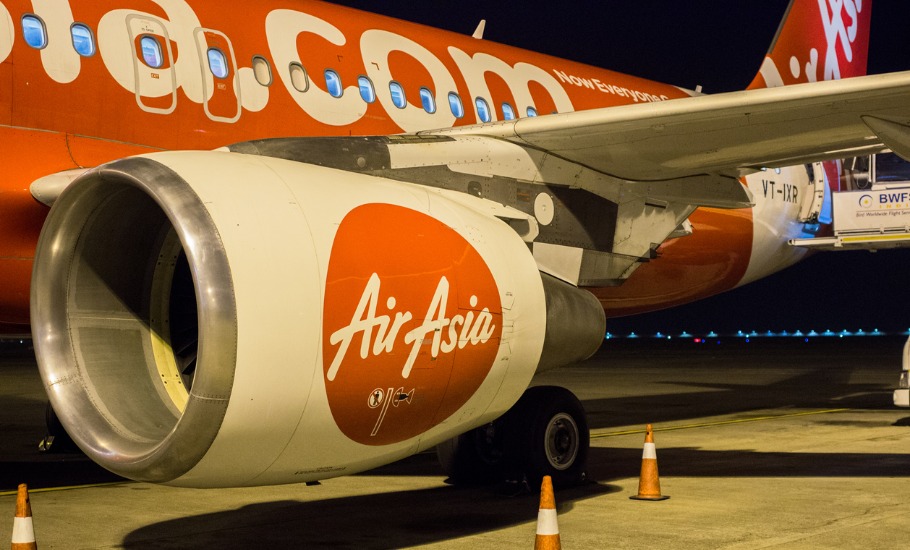
'Never say never': Will a troubled AirAsia quit India amid pandemic?
AirAsia India’s journey in the country has been dotted with troubles and the current situation, brought about by the pandemic and consequent assault on airline industry’s fortunes, may only exacerbate the pain.

In the scorching summer heat of 2013, Mittu Chandilya would usually be found sitting in the visitors’ room at the headquarters of India’s aviation regulator Directorate General of Civil Aviation (DGCA), filling out sundry forms for getting a flying permit.
Chandilya was the CEO of AirAsia India, the newest airline in India with which the Tatas were getting back into the business of flying after over two decades. AirAsia India was set up from scratch soon after the then UPA government scrapped the ban on foreign airlines owning a stake in Indian carriers.
Besides the Tatas, AirAsia BhD and Telestra Tradeplace were the other two stake holders in the new airline.
Chandilya spent many afternoons sweating under the solitary ceiling fan in that small DGCA room since the regulator seemed to be coming up with new formalities almost every week. In their defence, top DGCA officials at that time had said that a new airline was being set up from scratch in India after decades, and they needed to ensure that all compliances were in place.
Related news: AirAsia CEO Tony Fernandes steps aside amid Airbus bribery probe
At one time, the DGCA actually used a little known rule, buried in the Aircraft Rules of 1937, which seeks objections from the public before any new airline is granted flying permit. This not only was a departure from precedence — no new airline had been thus subjected to public scrutiny — but also further delayed the permit to AirAsia.
The constant delays that plagued AirAsia India’s application for flying permit were perhaps precursors to the string of troubles it has seen in its brief six-year stint (it finally flew in 2014).
Even the permission for the setting up of the airline came following an interesting debate over punctuation, in which some quarters objected to an airline being set up from scratch under the eased rules, saying that the rules applied only to existing airlines. A comma in the FDI notification finally allowed the government to assert that foreign investors were henceforth allowed in both, existing airlines and new ones.
Since beginning operations, AirAsia India has seen it all: stiff competition from peers, opposition from powerful politicians over alleged financial irregularities, change in the original three-way ownership structure, continuous scrutiny by the regulator over whether norms under ‘Substantial Ownership and Effective Control’ clause were being violated and consequent legal battles.
Related news: COVID-19: DGCA asks airlines to operate with vacant middle seats
It continues to face several government probes. It is no surprise that despite becoming eligible to fly overseas under India’s amended international flying norms, this airline is still awaiting the government’s nod. AirAsia India declined to offer comments on queries sent by The Federal.
Now, as a Credit Suisse analyst call with AirAsia BhD CEO Tony Fernandes shows, the Malaysian parent seems not too keen on the Indian market. So will AirAsia exit the partnership with the Tatas, in which it owns a minority 49 per cent stake?
From what Fernandes said during the call, it would be premature to believe that AirAsia BhD would exit the joint venture in India in any hurry, but the fact that he has mentioned the possibility serves as an indicator.
The Credit Suisse analysts quoted Fernandes acknowledging during the call that the ASEAN is a core market for the airline but that India and Japan are only peripheral markets: “While currently growing and committed, we would never say that we would never exit India.”
Related news: Flight curbs to be lifted only when COVID-19 under control: Puri
AirAsia India’s journey in the country has been dotted with troubles and the current situation, brought about by the pandemic and consequent assault on airline industry’s fortunes, may only exacerbate the pain.
A source pointed out that a significant fleet expansion done last year could become AirAsia India’s biggest headache in these times, when only a part of the capacity can be deployed and that too only on domestic routes in India.
“When fleet expands, more money is needed to maintain the aircraft and use them. Also, more money is needed to subsidise the losses,” a source said. AirAsia India has never reported a profit though it had narrowed losses last fiscal.
“AirAsia had narrowed losses quite significantly last fiscal but the situation brought on by the COVID-19 pandemic means India and Japan operations are struggling. Unlike other markets, India needs lots of funds. The airline now has a fleet of 30 aircraft — it added nearly a dozen in a short period of time before COVID-19 — and thus needs to pump in more money to fund the increased losses as capacity sits idle,” the source said.
Related news: DGCA lacks teeth, funds to keep delinquent airlines in check
The Credit Suisse analysts further quoted the airline to say that it was not thinking of adding any new planes “for a long while.” “AirAsia seemed to believe that oil prices can stay low for a long while (a lot of oil) and thus there are limited gains from a 15 per cent fuel saving in a low oil price environment. AirAsia seemed willing to take second-hand capacity if need be, rather than going for new planes.”
As the effects of a long drawn-out economic slowdown and travel curbs unfold for the airline industry, AirAsia India may find the going tougher in the coming months. And then, Fernandes perhaps may again look at whether to stay invested in India.

